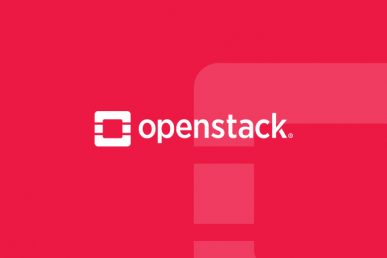This post originally appeared on opensource.com. Jason is passionate about using technology to make the world more open, from software development to bringing sunlight to local governments. He is particularly interested in data visualization/analysis, DIY/maker culture, simulations/modeling, geospatial technologies, and cloud computing, especially OpenStack. Follow him on Twitter.
Looking for a guide to walk you through the creation, care and upkeep of your open source cloud running OpenStack? We’ve collected some of our favorite tutorials and technical how-tos from the past month all here in one place. Be sure to visit the official documentation for OpenStack if you need further guidance.
In this monthly roundup of our favorite how-tos, guides, and tutorials, we look at gaming servers, log management, benchmarking, and more.
-
Curious about the health of the physical machines underlying your OpenStack installation? SNMP Inspector lets you run meters to keep an eye on CPU usage, memory, disk, and network stats; while IMPI Inspector can give you insights into fan speeds, voltages, temperatures, and more. Learn how to install and use both to monitor your cluster’s physical devices.
-
Many cloud platforms, OpenStack included, provide metadata services to make it easier to pass information from the cloud manager to the guest virtual machine instance when it boots. An obvious use for this is passing an ssh-key to the instance to allow for easy log in after the machine goes live, but there are other neat things you can do with bootstrapping as well.
-
OpenStack isn’t always fun and games, but sometimes you can’t help but put those spare CPU cycles to use doing something a little more laid back. The folks at Cloudwatt are apparently big fans of Team Fortress 2, and put OpenStack to work automatically installing a TF2 server.
-
The folks at eNovance have provided a great guide for understanding how to benchmark cloud infrastructure before you get it up and running. Rather than providing a detailed step-by-step, this guide gives an overview of the areas you should be considering and how to select the proper tests for each.
-
Jumpgate is an open source library designed to make more clouds compatible with OpenStack. It aims to connect OpenStack’s native APIs with the proprietary APIs of other cloud vendors. Learn more about Jumpgate, how to install it, and how it can be used with OpenStack Horizon to manage multiple regions in this guide.
- Our final guide for this month is a three part tutorial on OpenStack logging. Get started by installing and configuring rsyslogd, Logstash, and Kibana to process your logs and better understand what’s going on under the hood of your OpenStack installation.
Want more? Last month we linked to guides for getting OpenStack play well with firewalld and NetworkManager, using Test Kitchen with Puppet on an OpenStack deployment, Kerberos, Docker containers, and getting started with OpenStack on Solaris. Or check out our May roundup, which included several excellent beginners’ guides, tips on managing floating IPs, security and server hardening guides, an introduction to multi-node installation, and an overview of what is new in the most recent release of OpenStack Heat.
Image credit: "library books" by timetrax23
- Contributing back as an OpenStack operator - August 4, 2014
- 6 fresh guides for managing OpenStack - July 14, 2014

)










